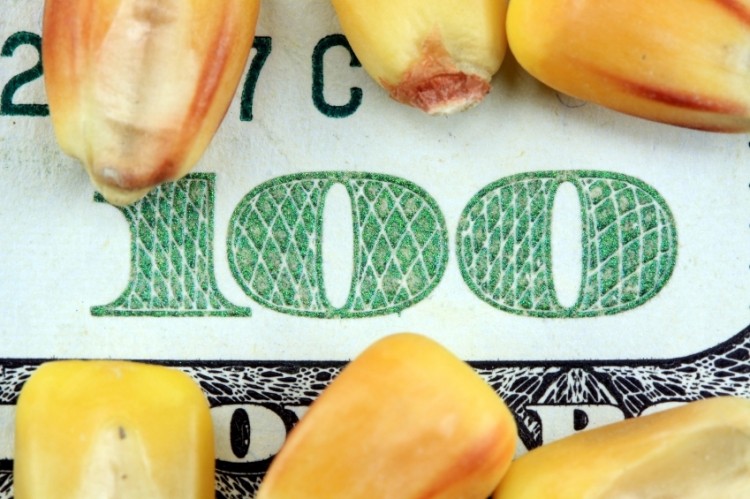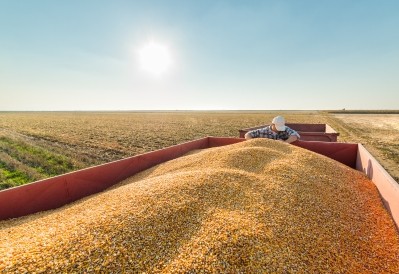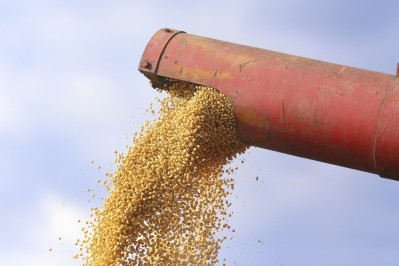Are US feed crop prices starting to rebound?

The USDA announced the potential price changes in the June World Agriculture Supply and Demand Estimates (WASDE) report released Friday. The report outlined increased exports and decreased 2015/16 ending stocks for feed ingredients including corn and soybeans.
Both agricultural commodities had their expected price ranges increase, said the USDA. Prices for soybeans in 2016/17 have been improved by $0.40 at the midpoint, and the soybean meal midpoint rose $20 to a range of $320 to $360 a short ton.
“The 2015/16 price is forecast up 10 cents per bushel at the midpoint with a range of $3.60 to $3.80 per bushel,” said the USDA of corn. “The 2016/17 price is projected 15 cents per bushel higher at the midpoint with a range of $3.20 to $3.80 per bushel.”
However, barring a major weather event, the upturn in prices may not signal long-term change, said David Schweikhardt, professor in the department of agricultural, food and resource economics at Michigan State University. “Whether this is really a bottom depends on the weather issue, not just here, but other places [also], and if we continue to build some of these stocks, then I guess I would feel we have not reached the bottom yet,” he added.
“The unique thing about period that we’re in is, we’re in a period of slow economic growth around the world that is going to last for a while, a five-year, ten-year time of slow growth, and until exchange rates turn in the US’s favor, I don’t think we’ll have a big driver on exports that would work down the stocks significantly or raise prices significantly,” he told FeedNavigator. “The macroeconomic situation that we’re in [with] slow growth around the world, and, with no sign of what country can lead us out of this, is a unique thing and, it’s not going to be easily overcome.”
Corn details
Corn supplies in 2016/17 are expected to drop, said the USDA. However, projected production is still anticipated to be a record setting 14.4bn bushels.
The season average farm price also has been increased for both 2015/16 and 2016/17, the agency said.
Ending stocks for 2015/16 have been dropped by 95m bushels based upon an increase in the corn export forecast offsetting a higher import projection, the agency said. Corn ending stocks for 2016/17 have been reduced by 2.008bn bushels.
Export commitments have gone past previous levels, a first for the 2015/16 marketing year and the export projection has also been increased for 2016/17, the agency said.
However, much of that growth is offset production in Argentina and Brazil, said Schweikhardt. “That it means that the current levels of export are probably sustainable, but we won’t be saved by exports,” he said.
The dollar may not gain much strength in coming months, but it also is not likely to drop enough to continue boosting export amounts, he said. How competitive US crops are depends in parts on what happens with exchange rates.
Additionally, a growing season that sees yields surpass current expectations could drop prices again, he said. “While the report showed some gains on exports and had some other positive things in it, it will be really sensitive to what the yield turns out to be,” he added.
World corn ending stocks for 2016/17 are expected to decline by 1.9m tons, said the USDA. And, world corn stocks are also predicted to decline.
Soy supplies
Soybean supplies are anticipated to have smaller beginning stocks, expanded exports and reduced ending stocks for 2016/17, said the USDA. Soybean crush for 2015/16 has been increased by 10m bushels and soybean meal exports also have been raised.
Ending stocks for 2015/16 have been dropped by 30m bushels, said the agency. Ending stocks in 2016/17 are expected to drop by 45m bushels.
Global stocks in 2016/17 are expected to be about 66.3m tons, a drop from previous estimates, the agency said.
Other feed grains
The outlook for feed grains in 2016/17 is expecting declines in supplies of sorghum and oats, which are expected to offset an increase in barley, said the USDA. Foreign supplies however, are predicted to increase by 5.3m tons.
US sorghum is forecast to see improved usage in 2015/16, said the agency. Export expectations have been increased by 15m bushels stemming, in part, from export sales.
Domestic usage predicted to improve by 10m bushels, although, feed usage is anticipated to drop, the agency added.
Internationally, the EU and Ukraine are expected to see 2.3m tons and 0.9m tons increased barley production for 2016/17, respectively, said the USDA.
US wheat supplies for 2016/17 have been increased, said the USDA. Expected production has been raised by 79m bushels stemming from hard red winter wheat crop yield.
Feed and residual use in 2016/17 has been raised to 200m bushels based on the crop size and improved competitiveness with corn, the agency said.
“Imports are lowered 5m bushels, and exports are raised 25m bushels to 900m, up significantly from the previous year’s depressed total but still below the five year-average,” the agency said. “Ending stocks are raised 21m bushels to 1,050m, the largest in 29 years.”
Globally, supplies for 2016/17 have been increased by 3.9m tons based on improved production in the EU, Russia and the US, said the USDA. Consumption is expected to increase, particularly for feed in the EU and Indonesia.















